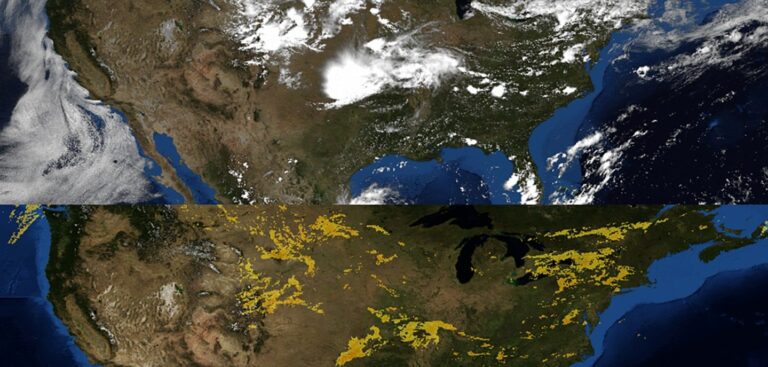NOAA’s Satellite and Information Service (NESDIS) has signed an agreement with Google to explore the benefits of artificial intelligence (AI) and machine learning (ML) for enhancing NOAA’s use of satellite and environmental data.
Under the three-year Other Transaction Authority (OTA) agreement, NESDIS and Google say they will pilot specific AI- and ML-related projects to amplify NOAA’s environmental monitoring, weather forecasting, climate research and technical innovation.
“Strengthening NOAA’s data processing through the use of big data, artificial intelligence, machine learning and other advanced analytical approaches is critical for maintaining and enhancing the performance of our systems in support of public safety and the economy,” said Neil Jacobs, PhD, acting NOAA administrator. “I am excited to utilize new authorities granted to NOAA to pursue cutting-edge technologies that will enhance our mission and better protect lives and property.”
Research will initially focus on developing small-scale AI/ML systems. With the results yielded from those efforts, NOAA and Google Cloud say they will then focus on executing full-scale prototypes that NOAA could ultimately operationalize across its organization. If successful, this has the potential to improve NOAA’s ability to leverage the enormous volume and diversity of environmental data in order to enhance prediction, including for extreme weather events such as hurricanes and tornadoes.
“By bringing together NOAA and Google’s expertise and talent, we can both resource and jointly explore AI/ML methods to achieve a more effective use of satellite and other environmental data,” said Mike Daniels, vice president, global public sector, Google Cloud.
“Our goal is to increase scientific impact, and improve the efficiency and effectiveness of environmental and satellite data by leveraging Google Cloud’s infrastructure and AI/ML know-how. All this will help improve weather forecasting, research and unlock innovation.”



